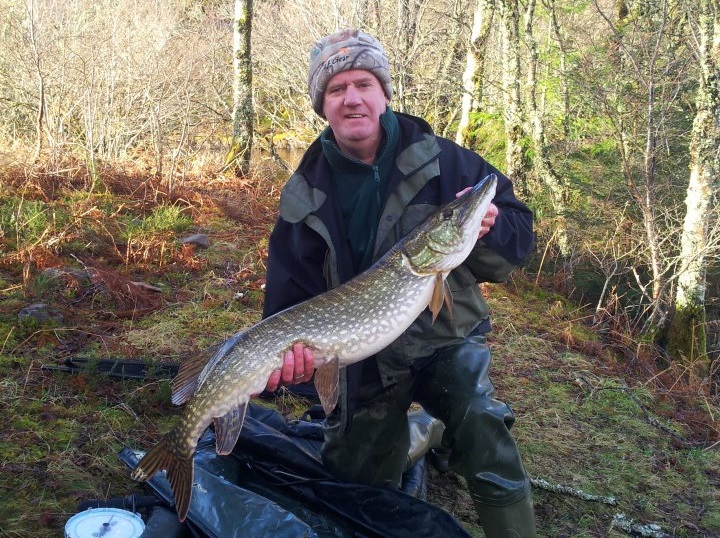The pike is easily recognisable with its elongated mottled olive green body, single dorsal fin set back towards the tail and long jaws full of sharp teeth. They are generally found in lochs or slower moving areas of rivers. Pike are ambush predators which lie in wait for prey to pass and then exhibit a sudden burst of acceleration as they strike.
A large Ness system pike (Photograph courtesy of Inverness Pike Angling Club)
It is not clear whether pike are indigenous to the Ness District. Until genetic studies are carried out, the boundaries of their native range in Scotland will remain uncertain. It is believed that they may have been introduced by man, initially as a food source and more recently for sport and have been established in the Ness District for over a century. The development of hydro schemes in the 1950s and the associated creation and enlargement of lochs resulted in an increase in suitable habitat for pike.
Little is known about the status of pike populations in the Highlands. Anecdotal evidence collected by the Scottish Federation for Coarse Angling (SFCA) suggests that populations may actually be quite small, with a comparatively narrow ‘pyramid’ of size ranges dominated by a few larger individuals whose diet is significantly cannibalistic (Ron Woods, SFCA Policy Officer, per comms).
The SFCA is concerned about the fragility of many highland pike populations. The deliberate culling of pike caught as a by-catch by game anglers was once common place. More recently SFCA believes that there is a rise in the numbers of pike being taken ‘for the pot’, either by individual anglers or on a larger commercial scale using illegal methods.



